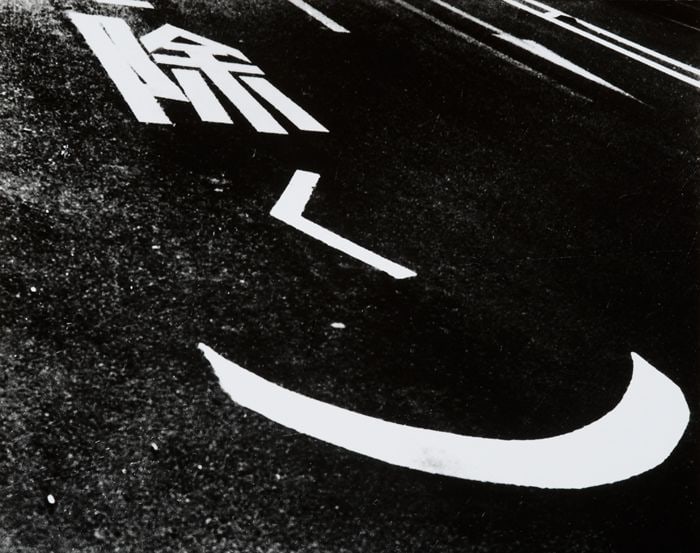
Untitled, ca. 1980s Black and white photograph
The work of Nasreen Mohamedi (1937-1990) made an unforgettable impression in ''Out of India: Contemporary Art of the South Asian Diaspora'' at the Queens Museum of Art in 1997. In a show dominated by figures and color, her linear ink and pencil drawings looked like nothing else. Made up of layered, perspectival, gridlike planes, they were like Malevich crossed with Agnes Martin, magic carpets or space ships sailing into the fourth dimension.
Born in Pakistan, Mohamedi lived a cosmopolitan life. She studied art in London, spent time in Paris and Tokyo, and taught art in Bombay for years. Talwar is showing her photographs from the 1960's and 70's, which she never exhibited. Remarkable in themselves, they have clear connections to her drawings. Most of them are abstracted images of specific places and things: Islamic architecture, painted directional markings on Japanese streets, ocean swells after a storm, threads pulled tight on a loom. (Mohamedi also worked with fabric, which she cross-stitched herself.) Each photograph suggests a Zen-like view of the world, at once reductive and sensuous, stripped down and opened up.
Mohamedi was, in fact, deeply interested in Zen Buddhism, as can be learned from a tender but clear-eyed memorial catalog published after her death, with excerpts from her journals and an ardent essay by Geeta Kapur. The book is unavailable in the United States, which is a real pity: if people, especially young artists, knew about Mohamedi, they would love her the way they do Eva Hesse. But then, the whole story of modern Indian art, so rich and complex, is still barely acknowledged in New York, making galleries that specialize in it, like Talwar, invaluable additions to the city's art culture.
As to Mohamedi herself, she broke essentialist ideas of what Indian art should look like, engaged with the advanced international art of her day, and left a profoundly personal body of work about which I am eager to learn more.
-Holland Cotter